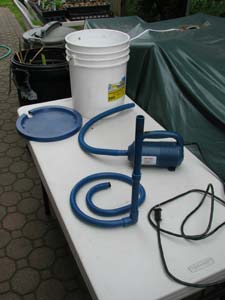I was not pleased with my dahlias the last few years and even after winning a number of head table awards I was sure the dahlias should have been bigger and more colorful. I was at a loss- I had used just about every combination of chemical fertilizer and jumped at any new chemical that promised to kill all of my pests and take care of all fungus. Still I was bothered with critters and my blooms were bigger in the past. As I was searching a garden magazine, I came across an advertisement for “TEAMING WITH MICROBES” by Jeff Lowenfels and Wayne Lewis. The ad made sense to me and I purchased the book. BEHOLD! A whole new world opened to me. The book made the subject of Soil Biology understandable. And even more important, it was logical! Jeff and Wayne took a complex subject and made it simple for gardeners like me. I decided to evaluate this ORGANIC growing. I took half of my dahlia garden and grew it the organic way, the other half I grew the old fashion way. The results were more than I had hoped for and proved to me that not only can I grow prize winning dahlias the organic way, I can bring my soil back to life.
Here are the steps I took and any of the products I mention I have used and recommend:
Starting: A soil test is necessary to check the condition of your soil. In early March, a dressing of CORN GLUTEN, an organic pre-emergence herbicide that is a by-product of corn syrup production, will get most weed seed before it gets rooted. A 10% nitrogen content comes along as a bonus. Next, I raked in (NO ROTOTILLING!) an application of WORM CASTINGS, which is just the very best stuff. Next, I applied my first treatment of COMPOST TEA. After some expensive mistakes, I purchased a 5-gallon brewer from KEEP IT SIMPLE, INC. It’s simple, foolproof and quick. (insert picture 2-3)I then had the tea tested by SOIL FOOD WEB of NY. Yes, the test is expensive, but not as expensive as some of the stuff on my poison shelf. The test results were outstanding and I was putting great biology back into my soil. Be sure your water is free of chlorine when brewing your tea.


Fertilizing: The key is weakly… weekly. I used NEPTUNE’S HARVEST HYDROLYZED FISH combined with Daniels Organic fertilizer. The plants responded well and I enjoyed excellent growth and flowers.
Insect control: Step one is healthy soil and the use of compost tea as a foliar spray. Early detection is the key to control. There are many organic controls on the market and most work well. If problems persist, a spray of TRIACT 70 NEEM OIL by OHP will usually control the critters.
Putting the garden to bed: After a killing frost or by late October it’s time to harvest tubers and prepare the garden for the winter. After digging, rake out the garden, removing any weeds. An application of corn gluten will take care of any winter weeds and provide a final feeding for the soil. Now it’s time for the cheapest and best amendment to the garden, a three-inch covering of ground leaves (the lawn mower will do this fine). The worms will love you for this and reward you with lot of nutritious worm castings. These friends will also help aerate your garden. I then cover the beds with black weed cloth to prevent the leaves from blowing away.
Sit back now and wait for spring.
Also, check out Two organic additives for your garden that are FREE!!
– Steve Nowotarski
